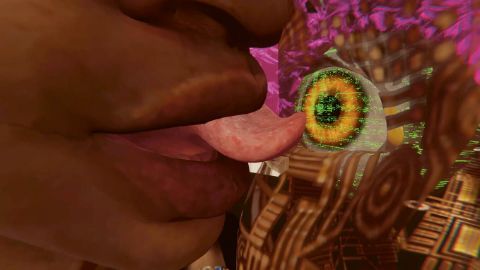Shu Lea Cheang

Shu Lea Cheang, still from UKI (2023), digital film. Courtesy of the artist
For decades, digital artist and filmmaker Shu Lea Cheang has drawn on a dizzying number of influences—from the corpus of science fiction and gender theory to transgenics—to reflect on the ever-collapsing boundaries between bodily autonomy and government control. In Virus Becoming (2022), the circulation of viruses and trash reflect shifting definitions of physical ‘purity’ and value: it is the year 2060 and Reiko, a decommissioned replicant, has been discarded by Genom Corporation after a data-collecting mission in the human world. Reiko’s now dysfunctional body is reconfigured anew of discarded circuit boards and a robot appendage with the help of other inhabitants of E-Trashville, a metamorphosis that ultimately leads to the spawning of a new virus, UKI. In the installation Red Pill (2021), a comically oversized pill filled with blood cells appears less as sculpture than as a prop for a Big Pharma trade fair booth. While the work does not explicitly reference the cultural connotations of the ‘red pill’ and the promise of a reality-shattering awakening it promises to usher in for the taker, those echoes are impossible to elide. That this notion has long been embraced by the alt-right and in the conspiracy narratives of the manosphere only underscores the slippery status of ‘truth’ and its ideological manipulation. Refusing to bend under the weight of all these influences, Cheang’s works hum with the exuberance of attraction and arousal. Hers is a queer vision of futurity where glitches in the system can still be harnessed for resistance.
WORKS IN THE EXHIBITION: Red Pill (2021), 3D print and glass, 100 × 30 × 30 cm; Virus Becoming (2022), 1-channel video, colour, sound, 6' 30". Courtesy of the artist